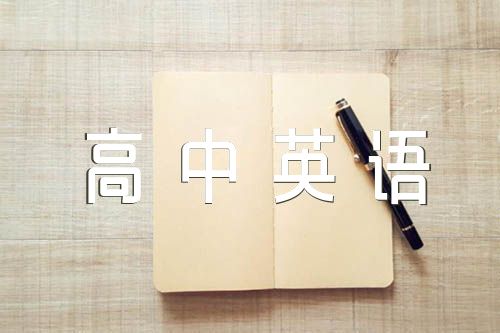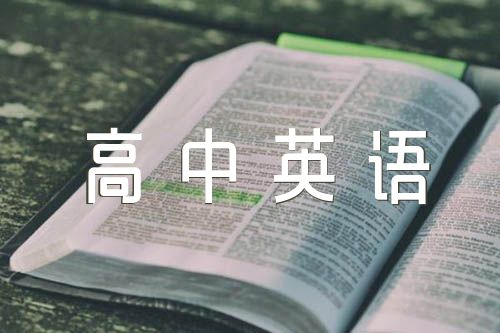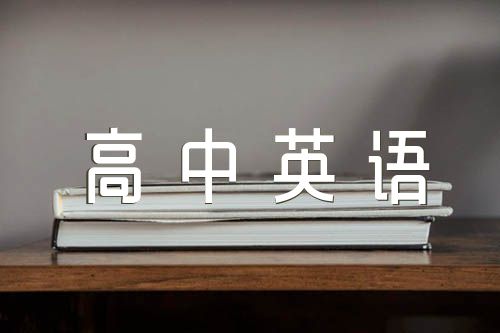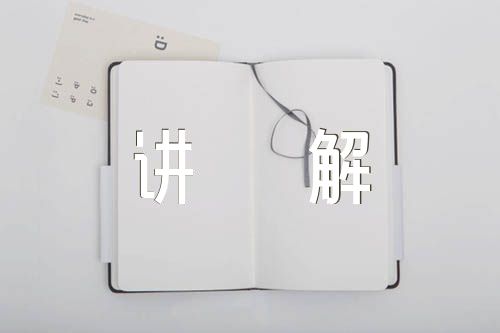【www.jianqiaoenglish.com--英语语法】
以下是小编整理的高一英语语法与使用的注意事项,仅供参考,希望能够帮助到大家。
英语语法的学习是英语学习中的核心之一,在高一这个承上启下的阶段对于这部分内容的学习更是要付出更大的心思,小编在这整理了相关资料,希望能帮助到您。
高一英语语法汇总
一、英语简单句的五种基本结构
S+V是主谓
S+V+DO 是主谓加双宾
S+V+P是主谓宾
S(主语)+V(谓语)+ I(间接宾语)+D(直接宾语)
S(主语)+V(动词)+O (宾语)+Complement(补语)
1. Subject (主语) + Verb (谓语)
这种句型中的动词大多是不及物动词,这些动词常见的有:appear, apologize,arrive, come, die, disappear, exist, fall, happen, rise,等等。如:
The students work very hard.学生们学习很努力。
She apologized to me again. 她再次向我道歉。
The accident happened yesterday evening.事故是昨天晚上发生的。
2. Subject (主语) + Link. V(系动词) + Predicate(表语)
这种句型中的系动词一般可分为下列两类:
(1)表示状态的连系动词。这些词有:be, look, seem, appear, smell, taste, sound, keep, remain, 等等。如:
Several players lay flat on the playground.几个队员平躺在操场上。
We should remain modest and prudent any time.我们在任何时候都应该保持谦虚谨慎。
This kind of food tastes terrible.这种食物吃起来很糟糕。
The picture looks more beautiful at a certain distance.这幅画在一定的距离看更漂亮一些。
(2)表示转变或结果的系动词。这些词有:become, get, grow, turn, go, come, prove,等等。如:
Spring comes. It is getting warmer and warmer.春天到了,天气变得越来越暖和。
Don"t have the food. It has gone bad.不要吃那种食物,已经变质了。
The facts prove true.事实证明是正确的。
3. Subject(主语) + Verb (谓语) + Object (宾语)
这种句型中的动词应为及物动词或者可以后接宾语的动词短语。同时,句子中有时含有与宾语有关的状语。作宾语的成分常是:名词、代词、动词不定式、动名词或从句。如:
You can put the books in your bag.你可以把书放在书包里。
Farmers in our area grow lots of vegetables.我们这里的农民种很多种蔬菜。
She lost the chance to make her appearance on the stage.她失去了在舞台上露面的机会。
I prefer to make web pages.我更喜欢做网页。
4. Subject(主语)+Verb(谓语)+ Indirect object(间接宾语)+Direct object (直接宾语)
这种句型中作间接宾语的常常指“人”,直接宾语常常指“物”。如:
Yesterday her father bought her a bicycle as a birthday present.昨天她父亲给她买了一辆自行车作为生日礼物。
The old man is telling the children stories in the Long March.老人正在给孩子们讲长征中的故事。
这种句型还可转换为其他两种句型:1)动词 + 宾语 + for sb.; 2)动词 + 宾语+to sb.。如:
Please show me your picture.
-Please show your picture to me.
请把你的画给我看一下。
I"ll offer you a good chance as long as you don"t lose heart.
—I"ll offer a good chance for you as long as you don"t lose heart.
只要你不失去信心,我会给你提供机会的。
5. Subject(主语)+Verb (动词)+Object (宾语)+Complement(补语)
这种句型中的宾语+ 补语可统称为“复合宾语”。担任补语的常常是名词、形容词、副词、介词短语、分词、动词不定式等。如:
Keep the children quiet, please. 请让孩子们安静下来。
He painted the wall white. 他把墙漆成白色。
We found him an honest person.我们发现他是一个诚实的人。
His mother told him not to play on the street.他母亲告诉他不要在街上玩。
注意:动词have, make, let, see, hear, notice, feel, observe, watch等后面所接的动词不定式作宾补时,不带to。如:
The boss made him do the work all day.老板让他整天做那项工作。
二、英语句子种类两种分类法
按句子的用途可分四种:
1)陈述句(肯定、否定):He is six years old. She didn’t hear of you before.
2)疑问句(一般、特殊、选择、反意):
Do they like skating? How old is he?
Is he six or seven years old?
Mary can swim, can’t she?
3)祈使句:Be careful, boys. Don’t talk in class
4)感叹句:How clever the boy is! What a clever boy he is!
按句子的结构可分三种:
1)简单句:只有一个主语(或并列主语)和一个谓语(或并列谓语)。
He often reads English in the morning. Tom and Mike are American boys.
She likes drawing and often draws pictures for the wall newspapers.
2) 并列句:由并列连词(and, but, or等)或分号(;)把两个或两个以上的简单句连在一起构成。
You help him and he helps you.
The future is bright; the road is tortuous. 前途是光明的,道路是曲折的。
3)复合句:含有一个或一个以上从句的句子。英语从句包括名词性从句(主语从句,表语从句,宾语从句和同位语从句),定语从句和状语从句等。
The foreign visitors took a lot of pictures when they were at the Great Wall.
三、英语句子成分分析
1、主语(subject): 句子说明的人或事物。
The sun rises in the east. (名词)
He likes dancing. (代词)
Twenty years is a short time in history. (数词)
Seeing is believing. (动名词)
To see is to believe. (不定式)
What he needs is a book. (主语从句)
It is very clear that the elephant is round and tall like a tree.
(It形式主语,主语从句是真正主语)
附带复习一下it 作形式主语的一些用法: 当主语部分太长时为了句子平衡采用it作形式主语。所谓形式是指句子的真正主语将在句子末段出现
1.it is+名词+从句 :It is a surprise that you give such an answer to this question.
2. it is +形容词+从句: It is certain that free medical care will be given to most people in our city.
3. It +动词+从句: It appeared that he had a taste for music.
4. It be +分词+从句:It is said that Li Tao has been to Europe.
2、谓语(predicate):说明主语的动作、状态和特征
We study English. He is asleep.
3、表语(predicative):系动词之后的成分,表示主语的性质、状态和特征。
He is a teacher. (名词)
Seventy-four! You don’t look it. (代词)
Five and five is ten. (数词)
He is asleep. (形容词)
His father is in. (副词)
The picture is on the wall. (介词短语)
My watch is gone / missing / lost. (形容词化的分词)
To wear a flower is to say “I’m poor, I can’t buy a ring. ” (不定式)
The question is whether they will come. (表语从句)
常见的系动词有: be, sound(听起来), look(看起来), fee l(摸起来),smell(闻起来),taste(尝、吃起来), remain(保持,仍是), feel(感觉) ….
It sounds a good idea.
The sound sounds strange.
Her voice sounds sweet.
Tom looks thin.
The food smells delicious.
The food tastes good.
The door remains open.
Now I feel tired.
4、宾语:
1)动作的承受者——动宾
I like China. (名词)
He hates you. (代词)
How many do you need? We need two. (数词)
We should help the old and the poor.
I enjoy working with you. (动名词)
I hope to see you again. (不定式)
Did you write down what he said? (宾语从句)
2)介词后的名词、代词和动名词——介宾
Are you afraid of the snake?
Under the snow, there are many rocks.
3) 双宾语——间宾(指人)和直宾(指物)
He gave me a book yesterday.
Give the poor man some money.
5、宾补:对宾语的补充,全称为宾语补足语。
We elected him monitor. (名词)
We all think it a pity that she didn’t come here. (名)
We will make them happy. (形容词)
We found nobody in. (副词)
Please make yourself at home. (介词短语)
Don’t let him do that. (省to不定式)
His father advised him to teach the lazy boy a lesson. (带to不定式)
Don’t keep the lights burning. (现在分词)
I’ll have my bike repaired. (过去分词)
6、主补:对主语的补充。
He was elected monitor.
She was found singing in the next room.
He was advised to teach the lazy boy a lesson.
7、定语:修饰或限制名词或代词的词、词组或句子。
Ai Yanling is a chemistry teacher.(名词)
He is our friend. (代词)
We belong to the third world. (数词)
He was advised to teach the lazy boy a lesson.(形容词)
The man over there is my old friend.(副词)
The woman with a baby in her arms is my sister. (介词)
The boys playing football are in Cla2. (现在分词)
The trees planted last year are growing well now. (过去分词)
I have an idea to do it well. (不定式)
You should do everything that I do. (定语从句)
8、状语:用来修饰v., adj., adv., or 句子。 表示时间、地点、原因、目的、结果、程度、条件、方式和让步。
(以下例句按上述顺序排列)
I will go there tomorrow.
The meeting will be held in the meetingroom.
The meat went bad because of the hot weather.
He studies hard to learn English well.
He didn’t study hard so that he failed in the exam.
I like some of you very much.
If you study hard, you will pathe exam.
He goes to school by bike.
Though he is young, he can do it well.
高一英语语法使用的注意事项
动词时态应注意的几点
1.瞬间性动词的一般现在时和现在进行时常用来表示将来的动作。例句:
①The film begins in a minute.
②My uncle is leaving tomorrow morning.
2.在时间、条件、让步状语从句中,常用一般现在时代替一般将来时。例句:
①Every time I listen to that song, I’ll think of my old friend.
②If you do that, I shall be very pleased.
③They’ll stand by you even if you don’t succeed.
3.一般过去时和现在完成时的区别:一般过去时和现在完成时都表示过去所发生的动作,但现在完成时强调这一动作与现在的关系,如对现在产生的影响、结果等,所以它不能和表示过去的时间状语连用;一般过去时只表示过去的事实,不表示和现在的关系,因而它可以和表示过去的时间状语连用。如:
—Have you finished your work?
—Yes, I have.
—When did you finish it?
—I finished it last summer.
2直接引语与间接引语转换时应注意的几个问题
1.人称的变化
2.时态的变化
3.时间状语的变化
4.地点状语的变化
例句:
①Xiao Yi said, “I want to go to the park this afternoon.”
→Xiao Yi said (that) he wanted to go to the park that afternoon.
②Bob said, “We’ll have a meeting here tomorrow morning.”
→Bob said (that) they would have a meeting there the next morning.
3定语从句中关系代词只能用that和不能用that的几种情况
只能用that的情况
1. 先行词是不定代词。
例句:Please tell me everything that happened to you.
2.先行词被形容词最高级、序数词或only, last, same, very等修饰。
例句: ①This is the most interesting movie that I have ever seen.
②This is the only book that I read during the summer holiday.
3.先行词既包括人又包括物。例句:She talked about the writer and his works that interested her.
不能用that的情况
1.非限制性定语从句中。
例句:He said he could speak three foreign languages, which is not true.
2. 先行词本身是that。
例句:I have that which you gave me.
3. “介词+关系代词”结构。
例句:The person to whom I talked just now is Tom.
4现在完成进行时与现在完成时进行的比较
1.强调动作还未结束时,多用现在完成进行时;强调动作的结果时,多用现在完成时。例句:
①I have been painting the paining. (强调“一直在画”这个动作)
②I have painted the painting. (强调“画完了”这个结果)
2.有些动词不能用在现在完成进行时中,但可用在现在完成时中。如:have, love, see等。例句:
①She has had a cold for a week.
②They have loved each other for three years.
③I have seen this movie.
-ing形式:
1. having done
having done是非谓语动词中-ing形式的完成式,而doing则是其一般式,它们都与句中主语构成逻辑上的主谓关系,只是doing与句中谓语动词同时发生或基本上同时发生;having done则表示动作或状态发生在句中谓语动词之前。
[例句]
①Hearing the news, they got excited. (hear和get excited这两个动作几乎同时发生)
②Having arrived at the top of mountain, they took a rest. (arrive发生在take a rest之前)
2.动词后接动词的-ing形式和不定式有些动词后既可接动词的-ing形式也可接to do形式作宾语,但意义有所不同。
[例如]
① forget / remember / regret doing sth.表示动作已经发生;
forget / remember / regret to do sth.则表示该动作未发生。
② mean to do sth.表示“打算做某事”;
mean doing sth.表示“意味着做某事”。
③ try to do sth.表示“设法尽力做某事”;
try doing sth.表示“试着做某事”。
④ stop to do sth.表示“停下来接着做另一件事”;
stop doing sth.表示“停止做某事”。
⑤ go on to do sth.表示“(做完某事)接着做另一件事”;
go on doing sth.表示“继续做同一件事”(= go on with sth.)。
⑥ can’t help to do sth.表示“不能帮助做某事”;
can’t help doing sth.表示“情不自禁地做某事”。
3. have/has been doing
have / has been doing是现在完成进行时的构成,强调动作的延续过程,动作可能还在进行。而have / has done是现在完成时的构成,强调动作的结果,该动作通常已经结束。
[例句]
①I have written a book. (动作结束)
②I have been writing a book. (可能未写完,侧重最近一直忙于写书)
















